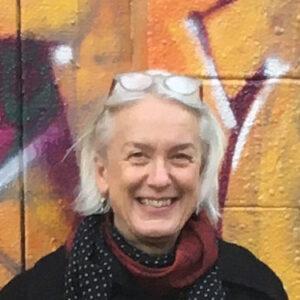
Guest Writer
Corine Pearce. Photo courtesy of Corine Pearce
Corine Pearce (Pomo) is a recipient of the 2023 Indigenous Leadership Awards.
Traditional Pomo baskets — woven for function, like work baskets and cradles, or woven as art, for form and design — are some of the most collected baskets in the world. This artistry represents time, skill, and a deep connection to the place where they are made. They tell stories old and new and are grounded in tradition and mythology, such as the importance of weaving a small change between knots, called the dau, a place for the ancestors to enter and teach the weaver.
Corine Pearce (Redwood Valley Little River Band of Pomo), Master Weaver, tells her own myth of becoming a basket maker. One summer when she was 9 years old, camping with her mother on a school field trip in Marin County, she had a dream. Sleeping at night under a willow tree, a traditional weaving material, her great-grandmother visited her in a dream and told her, “You are a weaver. You have weaver’s hands.” When Pearce woke up the next morning, she saw the world differently, as a place filled with weaving materials, patterns, stories that could be told in baskets. Her passion for weaving began then and there and has never wavered.
Pearce is honored with a 2023 Indigenous Leadership Award as a master artist in basketry for her determined efforts to revive the basket weaving traditions of the Pomo people and for her community role as a knowledge holder, culture bearer, and land steward.
“Baskets are really life,” she said. “They are everything. We carry our babies in them. We harvest our food in them. In order to make baskets, you have to have an intimate knowledge of the land. Not a lot of people weave. Not a lot of people weave for anyone outside their direct family. It’s a special thing to be a community weaver.”
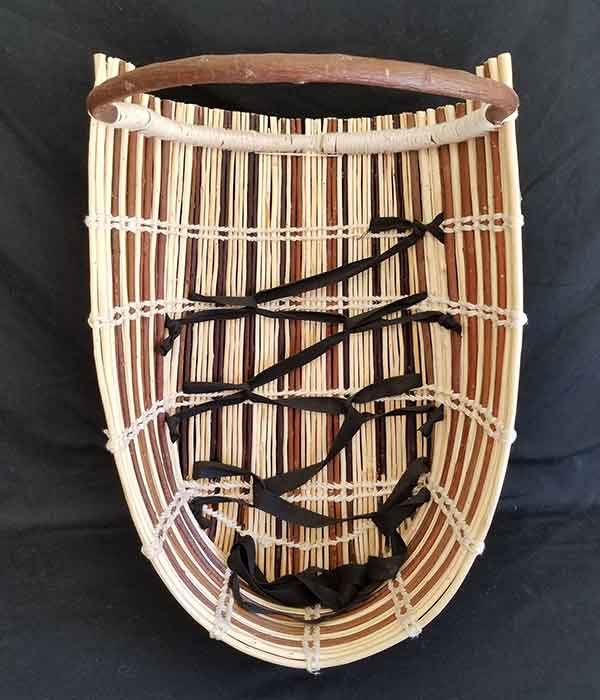
Cradle basket woven by Corine Pearce.
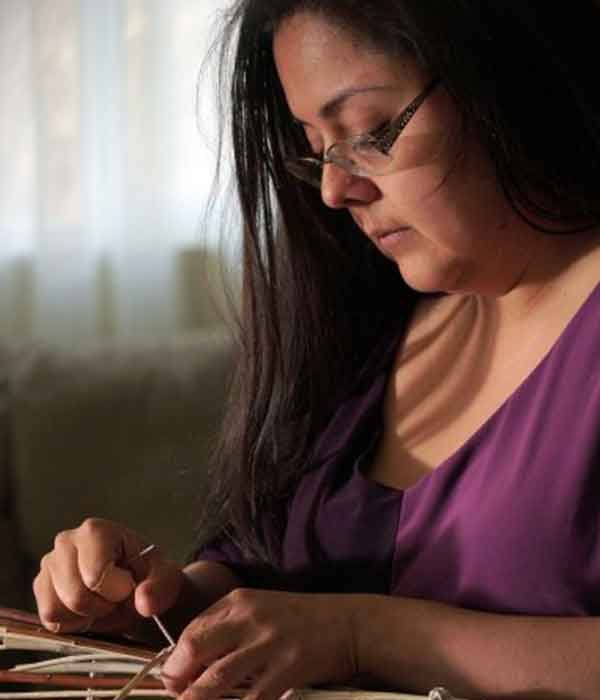
Corine Pearce. Photo credit: Mark Markly
It is traditional to learn how to weave from another weaver. When Pearce began to learn the craft, there were only a few elders left in her tribe who knew the traditions and techniques. She attributes this to the genocide and intentional disruption of Native culture. In her family alone, three generations of women preceding her, including her mother, were made to leave their families — to attend boarding school, to be relocated to urban centers, or sent to cities for one summer after another to be “assimilated.” Tribal culture was something neither to be proud of nor to honor. Pearce said that she represents the first generation in her family who wasn’t forced to leave home.
Much of what she knows, she learned on her own, reading books and teaching herself to weave. And while she didn’t learn directly from a weaver, she grew up with elders telling stories about weaving and baskets, what the designs meant, how they came to be.
Baskets have many lives, she said. They are sometimes honored as family treasures. Some baskets are made to be used — big and sturdy enough to carry firewood or smaller for gathering berries or flat to carry seaweed. Some baskets are purchased by art collectors or by art institutions for a permanent collection. Pearce’s baskets are both utilitarian and, increasingly, viewed as art.
In 2021, her work was part of a traveling exhibition in Elem Pomo baskets and paintings by Jules Tavernier that were shown at the Metropolitan Museum in New York City and the deYoung Museum in San Francisco.
“My baskets were in the same cases as their (other Pomo master weavers) baskets. I was like, oh my god, oh my god. I took a million selfies. That was really amazing.”
This year, she and three other Indigenous women weavers were invited to be part of an exhibit at the Smithsonian American Indian Museum in New York City. Her work is part of the permanent collections at the Cloverdale Museum of History and the Grace Hudson Museum, both in California.
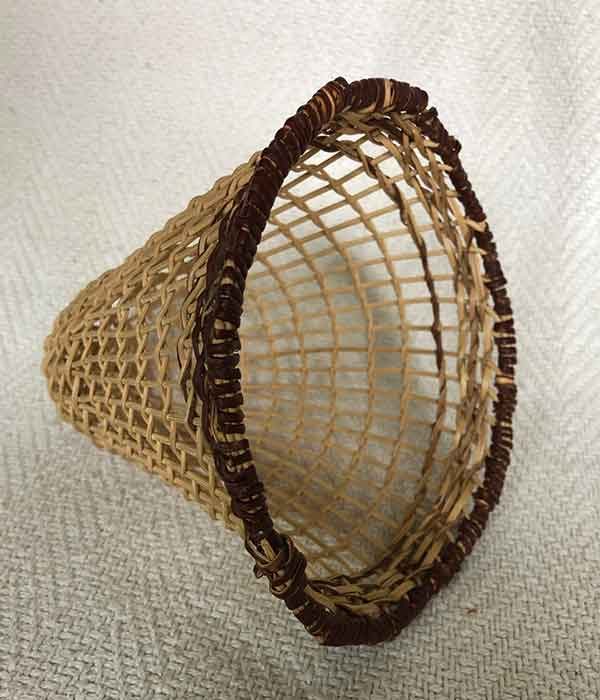
Small, soft winnow basket made by Corine Pearce.
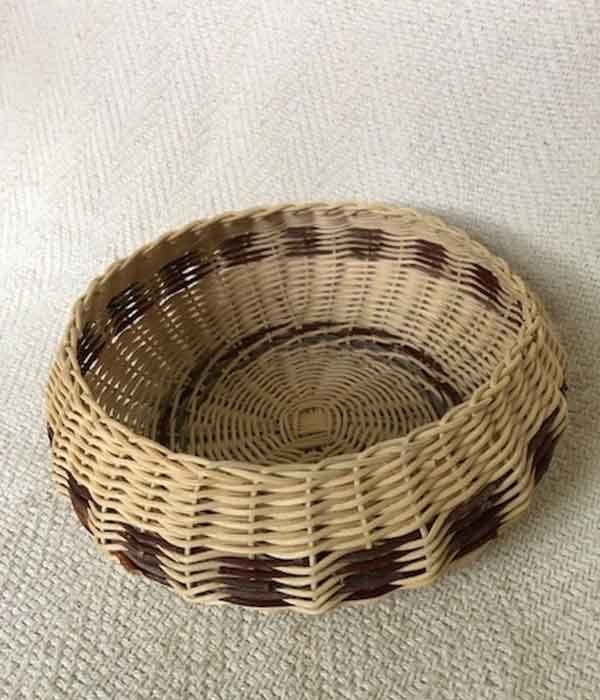
Top of a twine basket made by Corine Pearce.
Pearce currently works at several jobs along with her work as a weaver. She is a part-time cultural education coordinator for the Pomo Nation as liaison to the local school district and local tribes. She works extensively with local high school youth and has seen an inspiring transformation of young people as the first generation to speak openly and proudly about their Native roots.
“What I’ve seen in my life is amazing,” she said. “Many more kids are interested and proud when their parents couldn’t be. This is really the first generation of kids who are safe to be Native. It’s still not safe, but it’s safer. I get to help with that.”
Pearce also works as a consultant on ecological restoration including “good fire,” intentionally burning the land to nourish seasonal growth. She teaches, through harvesting and paying close attention to what the land offers, the relationship between humans and the natural world.
Weaving, said Pearce, is life itself: a deep knowledge of the natural world, to gather and process weaving materials from Pomo lands, creating designs rooted in Pomo stories, and caring for the plants and land that are baskets. “This cultural skill is who I am. I never thought what I did was really art,” she said, thinking of her work as more craft, creating functional work that could be used, such as baby cradles.
“
Baskets are really life. They are everything. We carry our babies in them. We harvest our food in them. In order to make baskets, you have to have an intimate knowledge of the land.
—CORINE PEARCE
Yet, after more than 30 years of weaving and teaching and sharing and speaking and learning how to be a better weaver, Pearce understands that she is at the threshold of being a true artist. And representation matters. In the past two years, she has curated seven art shows to integrate and represent Native artists, an acknowledgment of the importance of representation for Indigenous artists in the art world.
“I was able to do the first curated Indigenous art exhibit in Lake County, ever. It’s had a huge impact on representation there. They are doing a series of workshops on the impacts.”
The Pomo people live in Mendocino, Sonoma, and Lake Counties in California, lands with extensive biodiversity that shows up in basketmaking. The natural resources of Pomo lands meant that there was enough food while the land itself offered many materials to support a traditional way of life.
“Basically, we were rich. We had an abundance of food, which gave us an abundance of time. When you have an abundance of time, you can create (and imagine) complex things.”
The natural world is “part of who we are. I really believe that you only protect what you love. Once you make that connection, you can’t turn that off. It just gets deeper and deeper. The materials will teach you.”
Corine Pearce shares remarks and reflections during the 2023 Indigenous Leadership Awards.

WEBSITE
I am a Native California basketweaver. My weaving heals and restores both the land and the people. …

PRESS RELEASE
PORTLAND, Ore. — July 17, 2023 — Ecotrust today announced the recipients of the 2023 Indigenous Leadership Awards.

Project page
A celebration of the determination, wisdom, and continuum of Indigenous leadership across the region.